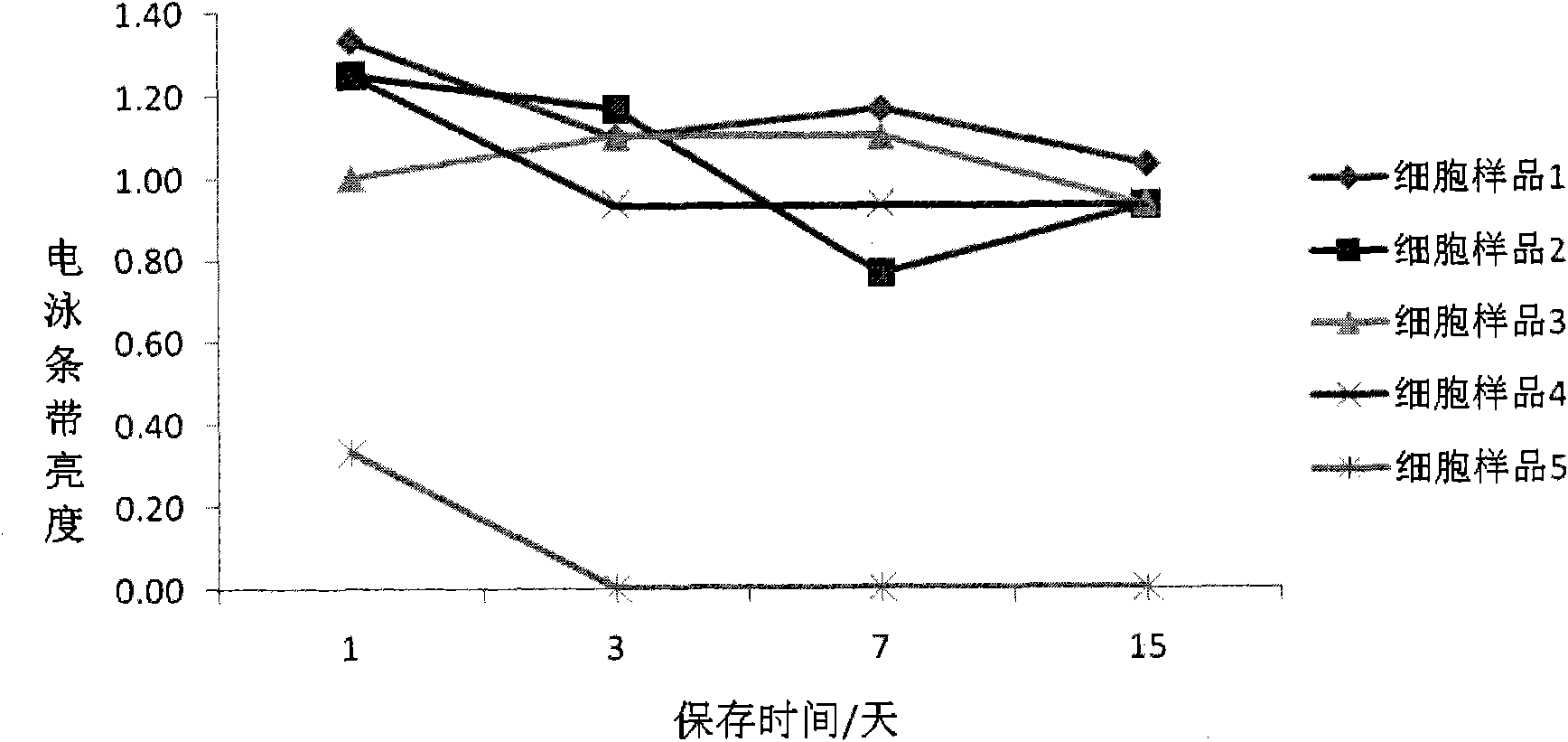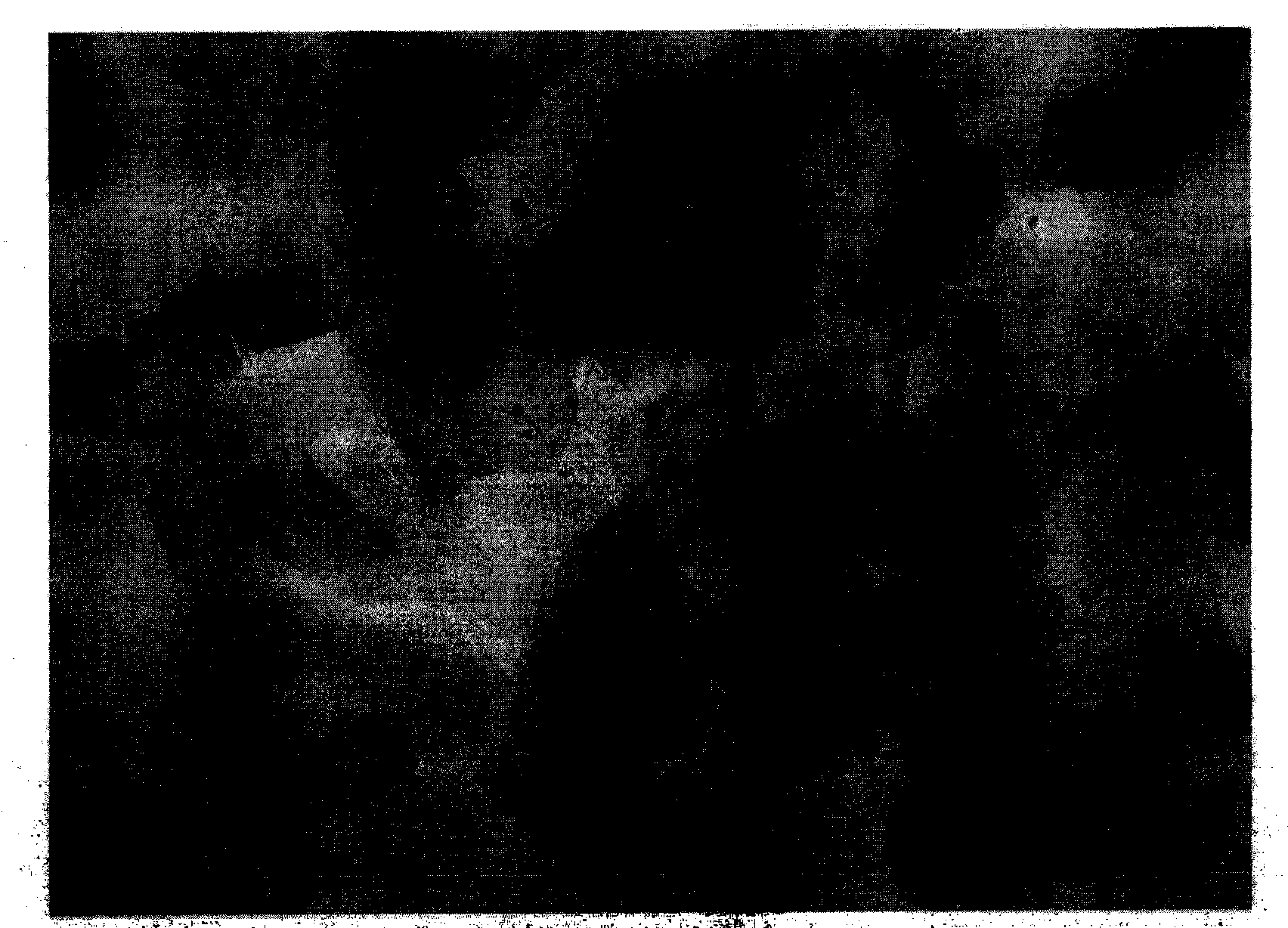Cell preserving fluid and preparation method and use thereof
A technology of preservation solution and exfoliated cells, which is applied in the field of cell biology, can solve the problems that cell preservation solution cannot meet the needs of technological development, unsatisfactory DNA preservation, etc., and achieve the effect of preventing degradation
- Summary
- Abstract
- Description
- Claims
- Application Information
AI Technical Summary
Problems solved by technology
Method used
Image
Examples
Embodiment 1
[0056] Example 1: Preparation of Cell Preservation Solution 1
[0057] In Milli-Q ultrapure water, sequentially add the buffer solution and ionic strength maintainer in the formulation amounts shown in Table 1, adjust the pH to 8.0, and then add fixative, fixative auxiliary agent and rinse agent. Among them, the ratio of the phosphate buffer solution is: add sodium dihydrogen phosphate (NaH 2 PO 4 ·H 2 O) 0.9g, disodium hydrogen phosphate (Na 2 HPO 4 ·7H 2 O) 24.97g.
[0058] Table 1: Recipe of Cell Preservation Solution 1
[0059] component name
[0060] Those skilled in the art can understand that although the weight unit of each component in the above Table 1 is g or ml, it can also be understood as parts by weight or parts by volume respectively, that is, each component meets the requirements in the above Table 1. The ratio will do.
Embodiment 2
[0061] Embodiment 2: Preparation of Cell Preservation Solution 2
[0062] Cell preservation solution 2 was prepared according to the same method as in Example 1, except that the components used and their addition amounts were shown in Table 2 below. The ratio of the acetic acid buffer solution is: add acetic acid (CH 3 COOH) 0.32g, sodium acetate (CH 3 COONa) 12.89 g).
[0063] Table 2: Recipe of Cell Preservation Solution 2
[0064] component name
[0065] Those skilled in the art can understand that although the weight unit of each component in the above Table 2 is g or ml, it can also be understood as parts by weight or parts by volume respectively, that is, each component meets the requirements in the above Table 2 The ratio will do.
Embodiment 3
[0066] Embodiment 3: Preparation of Cell Preservation Solution 3
[0067] Cell preservation solution 3 was prepared according to the same method as in Example 1, except that the components used and their addition amounts were shown in Table 3 below. Wherein the piperazine-N, N'-bis(2-ethanesulfonic acid) (PIPES) buffer solution has a ratio of: 3.02 g of piperazine-N, N'-bis(2-ethanesulfonic acid) is added to 150 ml of water.
[0068] Table 3: Components and amounts of cell preservation solution 3
[0069] component name
[0070] Those skilled in the art can understand that although the weight unit of each component in the above Table 3 is g or ml, it can also be understood as parts by weight or parts by volume, respectively, that is, between the components that meet the requirements in the above Table 3 The ratio will do.
PUM
 Login to View More
Login to View More Abstract
Description
Claims
Application Information
 Login to View More
Login to View More - R&D
- Intellectual Property
- Life Sciences
- Materials
- Tech Scout
- Unparalleled Data Quality
- Higher Quality Content
- 60% Fewer Hallucinations
Browse by: Latest US Patents, China's latest patents, Technical Efficacy Thesaurus, Application Domain, Technology Topic, Popular Technical Reports.
© 2025 PatSnap. All rights reserved.Legal|Privacy policy|Modern Slavery Act Transparency Statement|Sitemap|About US| Contact US: help@patsnap.com



